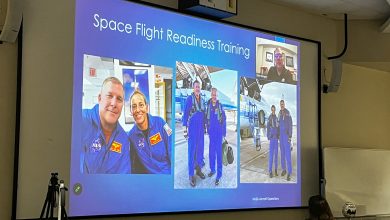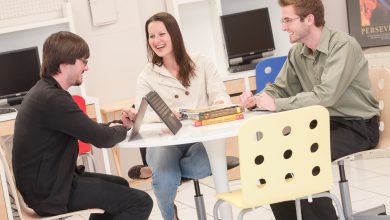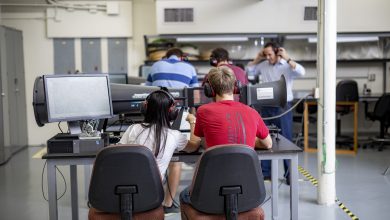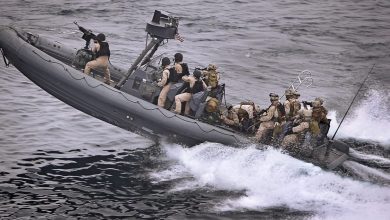Researcher Models Effects of a Suicide Bombing: Results of Crowd Configurations
MELBOURNE, FLA. — Recent research by Zeeshan-ul-hassan Usmani, a Florida Institute of Technology doctoral student and Fulbright Scholar, indicates that
various crowd formations exacerbate or minimize injuries and fatalities in the event of a pedestrian suicide bomb attack.
His work was conducted through virtual simulation. It showed that the crowd formation experiencing the worst effects is a circular one, with a 51 percent
death rate and 42 percent injury rate, thus reaching 93 percent effectiveness. A person that is in line-of-sight with the attacker, rushing toward the exit
or in a stampede was found to be in the least safe position.
The safest way to stand or sit in a crowd, Usmani found, was in vertical rows.
“Zeeshan is one of the most talented students I have met. His ability to grasp and integrate distinct unrelated topics is impressive,” said Richard
Griffith, Ph.D., Florida Tech associate professor and program chair, Industrial/ Organizational Psychology program.
His findings, though preliminary, may have implications for emergency response and counter-terrorism activities. He plans to continue the research,
integrating several physical and social variables into the simulation. These include modeling physical objects such as landscape and furniture, and such
social variables as crowd behaviors.
“There are many applications for this simulation, from special event planning to emergency response,” said Usmani.
Andrew English, president of SIMetrix solutions and a research professor at Florida Tech is co-author of the study. He has produced several reports on
using advanced technologies for training for the Department of Homeland Security, the Department of Defense and the Australian Defense Simulation Office.
Usmani holds a master’s degree in computer science from Florida Tech, where he continues toward completing a doctorate in computer science. As part of his
master’s thesis, Usmani developed a simulation of supermarkets to observe and quantify the effects of herd behavior on impulse shopping.. His work has been
noted in MIT’s Technology Review and The Economist. He will present this research again on Nov. 27 at the Interservice/Industry Training, Simulation &
Education Conference, to be held in Orlando, Fla.




